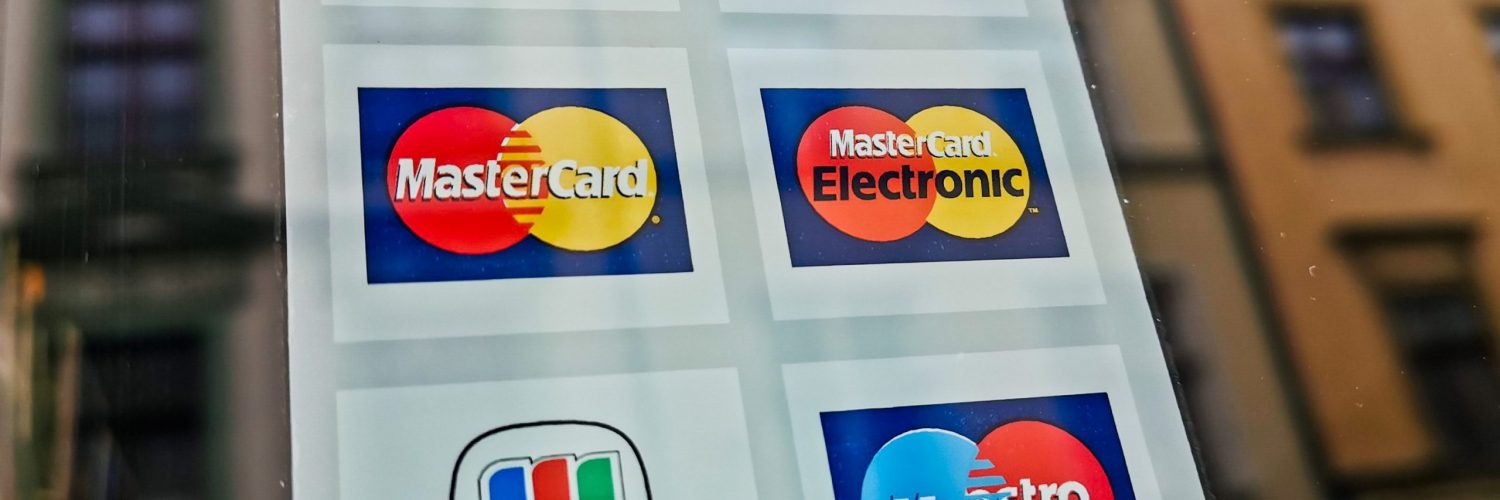Yet despite this surfeit of choices, many of Europe’s largest banks are backing an effort to build a new European-wide payments network that could replace national payments networks and challenge the dominance of Visa and Mastercard across the continent.
BY JEREMY KAHN AND CHRISTIAAN HETZNER
July 10, 2021 1:30 PM GMT+5:30
Why Europe is building another payments network even though it doesn’t need one
When a European shopper gets to the till, they aren’t lacking choices in how to pay.
Most places accept Visa and Mastercard as well as local payments systems such as Giro in Germany or Carte Bancaire in France. When that same shopper goes online, they have even more options, including PayPal and sometimes Alipay, the Chinese payments giant, and perhaps options offered by new fintech startups, such as Klarna’s buy-now-pay-later service.
Yet despite this surfeit of choices, many of Europe’s largest banks are backing an effort to build a new European-wide payments network that could replace national payments networks and challenge the dominance of Visa and Mastercard across the continent.
Previous efforts to create such a pan-European payments network failed. Most recently, one called the Monnet Project collapsed before it ever got off the ground in 2011. This time, the project is likely to at least make it to launch. That’s because the new European Payments Initiative (EPI for short) is as much about politics as it is about business.
The nuclear option
The European Commission and European Central Bank began a concerted drive to pressure banks to build a Europe-specific cross-border card payment system in 2018. That’s when the Trump administration withdrew from the Joint Comprehensive Plan of Action on Iran, often referred to in the U.S. as simply “the Iran nuclear deal.” The EU continued to abide by the agreement and did not want its policies vis-à-vis Iran dictated by the U.S. and Trump. And yet it now faced the increasingly real threat that the U.S. could impose what are known as “secondary sanctions” that would force Mastercard and Visa, which are both U.S. corporations, to cut off access to any European financial institutions or companies that continued to do business with Iran. The vast majority of cross-border card transactions in Europe are handled by either Mastercard or Visa.
“The EU may be more exposed to the risk that the monetary power of others is not used in its best interests, or is even used against it,” Benoit Coeure, at the time of a member of the ECB board, told a conference in Brussels in December 2019.
But some international payments executives say this fear was always overstated. The U.S. never actually moved to cut off European access to Mastercard and Visa.
The threat may indeed have come less from the U.S. government and more from powerful U.S. and Chinese technology companies. The ECB was alarmed that Facebook’s now defunct Libra project, as well as Chinese payments solutions such as Alipay and WeChat Pay, would leave Europe in the dust, with the ECB having no ability to regulate the payments networks, and Europe’s banks largely cut out of consumer payments.
“From a European point of view, it is important to establish a European payment scheme to remain independent,” a Deutsche Bank spokesperson tells Fortune, explaining why the bank, Germany’s largest, decided to join the EPI.
SEPA protocol
There were other reasons the ECB was pushing for the EPI, too. Not only were European banks not at the cutting edge of innovation, some were lagging an entire technological cycle behind. Cross-border bank-to-bank transfers in Europe can use something called the single euro payments area (SEPA) protocol. But banks, some still using computer systems designed for the days of mainframes, would process these SEPA transactions in batches, once per day, and it sometimes could take up to three business days for the transaction to be settled and the money to actually appear in the recipient’s account.
The ECB worried the lack of instant payments put European consumers and businesses at a disadvantage compared with those in other large markets, like the U.S. and China. (The ECB has even broached the idea of creating its own, wholly digital currency in an effort to catch up.)
The added friction of these cross-border transactions reinforces monetary borders between states that the ECB is dedicated to eradicating. So it has pushed Europe’s banks to move to a new transfer system, where amounts up to €100,000 could be transferred within 10 seconds, and it has said it would like card and credit payments to be handled through the same instant transfer protocol. But many of Europe’s banks don’t have the infrastructure to handle cross-border card transactions in this way, and adoption of the new instant payment method has been slow.
The desire to meet the ECB’s demands led a group of 31 European banks from seven countries, including some of the biggest banks in Germany and France, to form the EPI. Two large payment processors have also joined as initial shareholders. (The project was initially known by the acronym PEPSI—for Pan-European Payment System Initiative—but the beverage company apparently objected, forcing a name change to EPI.)
€6 billion project
Martina Weimert, a former partner at financial consulting firm Oliver Wyman who has been appointed chief executive officer of the Brussels-based corporation in charge of implementing the project, says that the EPI will start with peer-to-peer payments, since those don’t require the EPI to have a large merchant network in place, or have dedicated physical payments terminals. Those features will come later, she says. She told the Financial Times earlier this year that the EPI will cost “several billion euros” to get up and running. Private estimates range as high as €6 billion.
The EPI says it plans to have a new payments network, built on the new instant SEPA protocol, up and running by sometime in 2022, with a full suite of features available by 2025. It’s a goal that even the association of German savings banks (known by the acronym DSGV)—a key backer of the EPI with its head, Joachim Schmalzl, serving as the EPI’s chairman—acknowledges is “extremely ambitious,” and will depend on a consensus among the consortium of participants that may prove difficult to achieve.
This is especially true because many European payments experts note that some Nordic countries, including Sweden and Denmark, have already built successful instant payments networks, and that they are unlikely to want to switch to a pan-European system. And there’s already another rival instant payments clearinghouse, called the EBA, that is wholly owned by European banks.
Meeting the EPI’s timetable may be even more difficult given that the organization hasn’t even figured out exactly how it will make money yet.
In her FT interview, Weimert insisted the EPI would offer “a different business model” than Mastercard and Visa, which make money by charging merchants what are known as “interchange fees” to cover the costs of processing payments, as well as guarding against fraud. (The networks also charge other service fees to the banks that issue the cards). European politicians and regulators have long been opposed to interchange fees, and in 2015 capped the amount card networks could charge. But Weimert was vague about exactly what that alternative model will be, saying only that the EPI would charge merchants’ banks for the instant payment processing service and that the banks could then pass some of this cost on to merchants.
This lack of clarity may be one reason a number of large European payments processors have not rushed to join the EPI and are instead taking a wait-and-see approach. A number of payments industry insiders said that the current cross-border payments system was working relatively well and that the EPI was “a solution looking for a problem.”
‘Built for the digital age’
Gilles Grapinet, the chairman and chief executive officer of Worldline, which is Europe’s largest payments processor and which is taking part in the project, says that he thinks there is value in creating a new payments network from the ground up, rather than grafting new functionalities onto networks that date from the 1970s and 1980s and were originally designed just to process physical card payments. “We think it is a great opportunity to design a new payment brand that is built for the digital age,” he says. Grapinet says that the EPI would be designed from the start to be omnichannel—able to be used seamlessly for in-store and online purchases, debit and credit payments, as well as for instant peer-to-peer money transfers. None of Europe’s domestic card payments networks can do this presently.
That’s also the reason Nets, a Danish payments processor that is poised to expand throughout Europe following its acquisition by Italy’s Nexi Group, says it is participating in the EPI. Torsten Hagen Jorgensen, Nets’ chief executive officer of issuer and e-security services, says the project should benefit Europe’s consumers who are increasingly demanding a single digital payments option that they can use wherever they shop, online or in stores.
Worldline’s Grapinet says merchants should welcome the EPI, too. Right now, the lack of a unified debit card payments network means that large retailers, with hundreds or thousands of stores across Europe, have to connect to potentially dozens of local payment networks, each of which has its own fees, charges, and payments terminals. “There’s a lot of extra cost to get connected to all these local schemes,” he says. “It is in the interests of merchants to have a more unified payment landscape.”
Although the EPI is often positioned as a rival to Mastercard and Visa, Jason Lane, Mastercard’s executive vice president in charge of European market development, says he doesn’t see the new payment network that way. In fact, Lane says that the EPI will likely have to partner with Mastercard and Visa to handle cross-border payments outside of Europe. What’s more, Mastercard is bidding to become a technology provider to the new payments system, helping it with things like anti-fraud measures and contactless payments. “We are adopting a collaborative mindset,” Lane says. “We think it makes sense to have this European entity.”
Visa would not comment on the record for fear of antagonizing the European banks who are members of its payments network.
Given the political pressure to make it happen, it is almost certain the EPI will eventually launch. But European consumers would probably be wise to not take a scissors to their Mastercards and Visas just yet.
Correction, July 11, 2021: A previous version of this article misstated where the Giro card payment network is predominantly used. It also wrongly identified Nets as the acquirer in its merger with Nexi.











